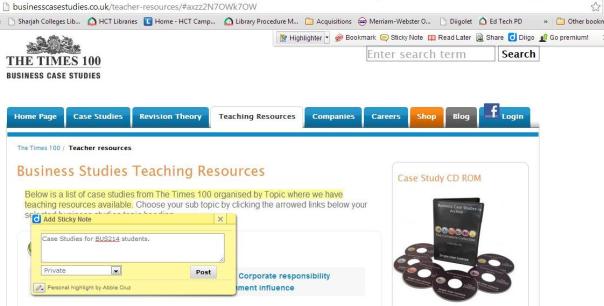|
How Facebook (FB) is used |
Seattle Public Library |
Toronto Public Library |
Novi Public Library |
| Marketing library services | Hold requests through links posted in FB; launching of new services and photos of newly renovated areas; cover page and/or list of featured books | Launching of new services; workshops/trainings about new library equipment or services; cover page and/or list of featured books | Launching of new services; cover page and/or list of featured books; featured library staff and their primary roles |
| Promotion of library events | Upcoming events, even of other public libraries; online competitions; announcement of workshops/trainings | Events participated by or organized by the library; University of Toronto Library events; online competitions; announcement of workshops/trainings; featured or invited authors | Events participated by or organized by the library; online competitions; announcement of workshops/trainings; |
| Engaging with the community | Historical images, trivial information and news about or related to Seattle; shows support to community activities such as sports; surveys; questions about the library or community; photos of users participating in library events; photos of library staff participating in community activities | Historical images and news about or related to Toronto; shows support to national programs such as Canada Reads and No Smoking Week | Shows support to community activities such as sports; surveys; photos of users participating in library events; photos of library staff participating in community activities |
| User participation | High participation of users by posting comments and liking posts; users share photos; users answer surveys; users participate on online competitions | Medium participation of users by posting comments and liking posts; users participate on online competitions | Low participation of users by posting comments and liking posts; users answer surveys; users participate on online competitions |
| Library goal(s) achieved | Empower Seattle’s distinctive communities and vibrant neighborhoods: A. Bring Library resources to where people are. B. Establish the Library as a civic focal point and resource hub for Seattle’s communities. C. Adapt spaces and services to support Seattle’s vibrant neighborhoods. |
Incorporate new and emerging technologies into virtual library services, and make them available anywhere/anytime: A. Encouraging content creation through digital innovation hubs, arts hubs and other innovative spaces and partnerships. |
The Library must be able to meet the challenges that come with technology: A. Helping patrons to access the abundance of materials available both in the Library and online. B. Enhancing web and social media presence for remote library users. C. Maintaining the flexibility and timeliness to find and deliver information in a community that is ever changing. |
Figure 1. Comparative Analysis of Facebook Pages of Three Public Libraries
With the emergence of new media technologies, a participatory culture – allowing the library users to “archive, annotate, appropriate and recirculate media content in powerful new ways” (Carlsson, 2012) – has also emerged. To be able to cater with the information needs of the contemporary library users, public libraries must consider the significance of participatory online environment in transforming its services. Hence, it is crucial for libraries to use social networking tools to keep connected with their users (Neo & Calvert, 2012).
Considered as a successful online social networking tool, Facebook (FB) has become a part of the everyday life of its members, approximately 500million as of July 2010 (Neo & Calvert, 2012). As seen in Figure 1, some public libraries have utilized Facebook to interact with and understand their user’s needs. Here are some benefits of FB based on the observations in Figure 1:
- Promoting events and introducing library services to a broader range of users through the virtual community. All the 3 public libraries use FB to announce new services and feature library collection. They are also posting events organized and supported by the library. They also hold online competitions and workshops/trainings for their users. FB is primarily used for marketing and promotion of the public libraries.
- Engaging the users by consistent communication and regular postings. Regular postings include historical information, trivial questions, community activities and photos. The more active the FB page is, the more participation they get from the users.
- Providing library users an avenue to contribute and share information. The 3 public libraries actively post surveys, questions about preferred services or books and old and new photos to get to understand their users. This encourages library users to express their views and share their knowledge which enhances the contents of the library’s FB page. By facilitating the exchange of information through the FB page, public libraries are building an interactive community.
- Visibility of the library both in the online environment and the community. Public libraries show their support to the community by organizing events and participating in the activities of the community (i.e. sports) as seen in photos posted in their FB pages. They are not only informing their users but they are also being engaged and making their presence known to the community.
References:
Carlsson, H. (2012). Working with Facebook in Public Libraries: A backstage glimpse into the library 2.0 rhetoric. Libri, 62(3), 199-210.
Neo, E., & Calvert, P. J. (2012). Facebook and the diffusion of innovation in New Zealand public libraries. Journal of Librarianship and Information Science, 44(4), 227-237.
https://www.facebook.com/novipubliclibrary
https://www.facebook.com/SeattlePublicLibrary
https://www.facebook.com/torontopubliclibrary
http://novilibrary.org/AboutUs/LibraryBoard/StrategicPlan2013-2018.pdf
http://www.spl.org/about-the-library/strategic-planning/goals-and-objectives
http://www.torontopubliclibrary.ca/about-the-library/strategic-plan/create.jsp

